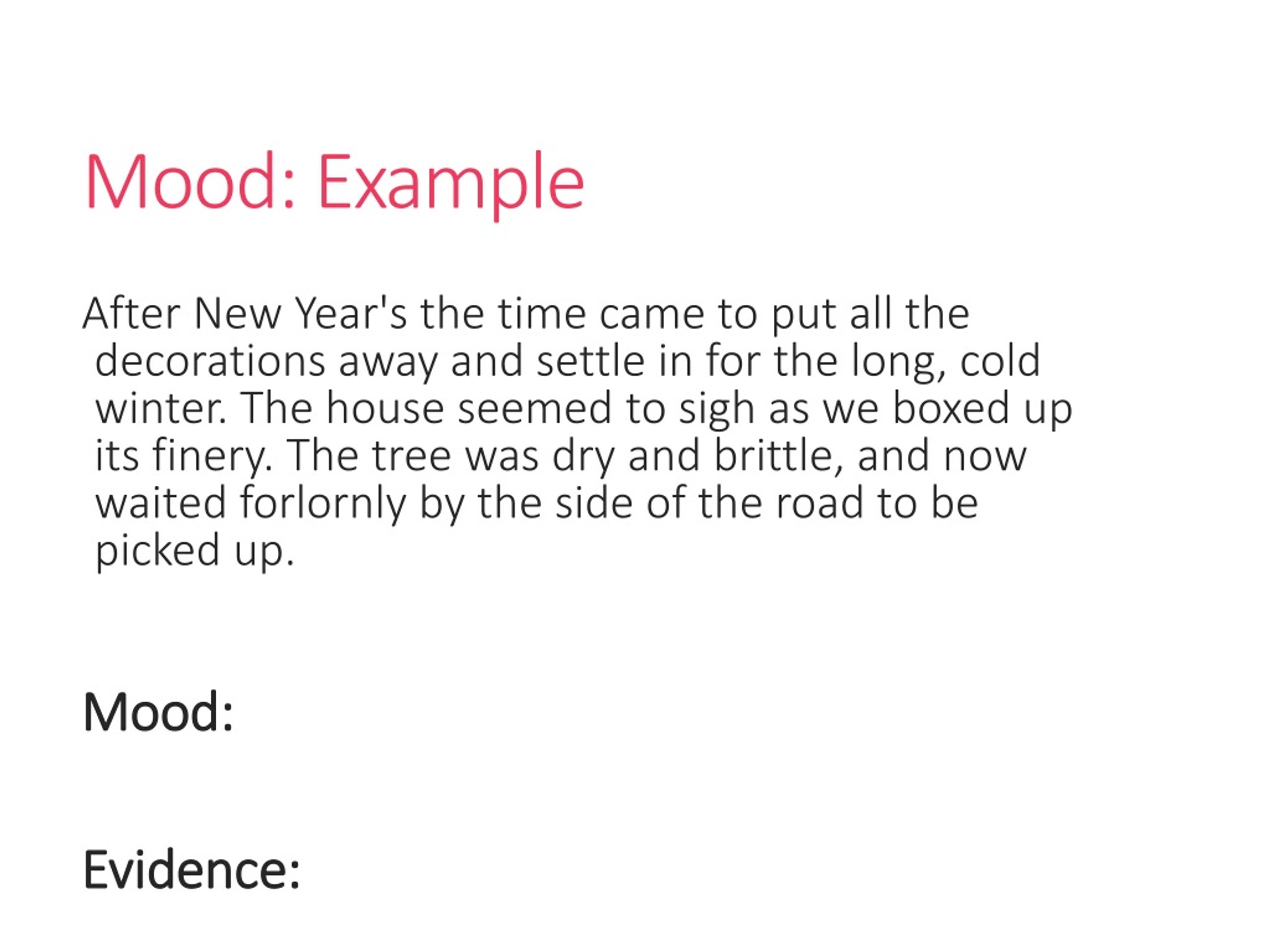

- Different moods of a story movie#
- Different moods of a story full#
- Different moods of a story series#
Different moods of a story series#
Today’s Writers’ Tip: Another Common Fiction Mistake | Marsha Hubler: Author of THE LOVES OF SNYDER COUNTY SERIES and THE KEYSTONE STABLES BOOKS.Thursday, Aug| outragerous - Here are links to help you with the terms: and MLA:.Week 6: Developing Mood | The Deep Method - or joyful! Make sure kids know that they develop mood by making their reader feel something.Gone Home Lesson 3: Sound Bites, Word Clouds and Vision Quests - for mood and tone, and then we discussed the distinctions between them.If you need a refresher on either mood or tone, check out this…

Different moods of a story movie#
One good way to see mood (and, to a degree, tone) in action is through genre-crossing movie trailers. Mood is the atmosphere of a piece of writing it’s the emotions a selection arouses in a reader. If we were to read a description of a first date that included words and phrases like “dreaded” and “my buddies forced me to go on the date”, we could assume that the individual didn’t really enjoy the date. While journalistic writing theoretically has a tone of distance and objectivity, all other writing can have various tones. Tone is the author’s attitude toward a subject. Though they seem similar and can in fact be related causally, they are in fact quite different. Tone and mood both deal with the emotions centered around a piece of writing. Start your subscription to get access to more than 30,000 additional guides and more than 350,000 Homework Help questions answered by our experts.The tone and mood words listed below are also available as a Word document. Jimmy Wells was the beat cop that Bob had been talking to earlier, and he tipped off his colleague to allow him to move in and arrest his old friend. Then, the mood changes completely there is no more mystery, no more secrets.

Indeed, the true nature of the relationship between Bob and the beat cop who strikes up a conversation with him won’t become clear until Bob and the man he wrongly thinks is his old pal Jimmy Wells walk past a drug store on the corner and are suddenly bathed in brilliant electric light. Yet there’s an air of mystery about the man as he stands in the doorway of a hardware store. This makes the lone figure of “Silky” Bob all the more conspicuous. It’s 10 o’clock at night on a damp, windswept street, and adding to the atmosphere of mystery, the street is eerily quiet, as the inclement weather has cleared the streets of people. Initially, the mood of the story is quite mysterious. Jimmy’s actions highlight his thoughtful character. In this way, Bob will never have the memory of being arrested by a former treasured friend. Instead of arresting his former friend, Jimmy sends someone else to do the job. Yet, we are touched by Jimmy’s words in the letter. Instead of having a nice reunion, Bob gets arrested. At the end of the story, the mood is reflective as well as tragic. We get the idea that something ominous is heading our officer’s way.Īnd we aren’t mistaken in our emotional reaction: Bob gets apprehended by a police officer masquerading as Jimmy Wells. In response, people look for shelter away from the elements. As the story progresses, we discover that the wind has picked up and the rain is now falling steadily. At the beginning of the story, we learn that a little wind and rain has contributed to the night chill. The mood changes in the middle of the story, however. The police officer is described as “strong and important.” He’s also a “fine-looking cop, watchful, guarding the peace.” The police officer (who we later learn is named Jimmy Wells) is a figure that inspires trust.
Different moods of a story full#
Based on the diction, the writer has full confidence in the officer’s abilities. The writer introduces us to a police officer on his rounds. “Mood” also inspires an emotional reaction in readers, so it’s quite an important story-telling element.Īt the beginning of the story, the mood is pleasant, upbeat, and positive. The latter is the writer’s attitude towards the subject matter or protagonist (or both). “Mood” refers to the atmosphere of the story and is often inspired by tone. There are several types of moods in the story.


 0 kommentar(er)
0 kommentar(er)
